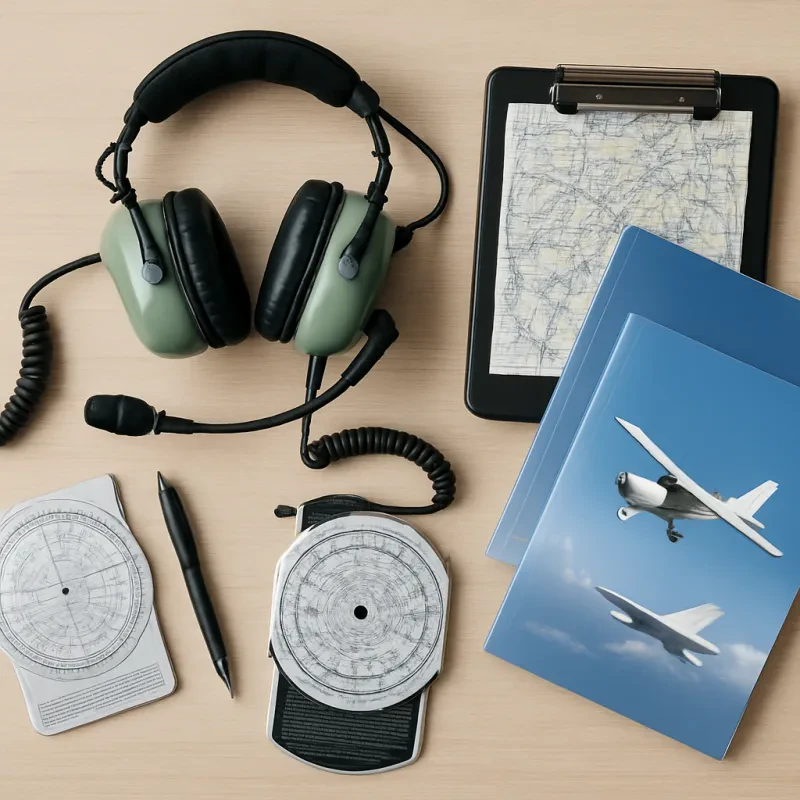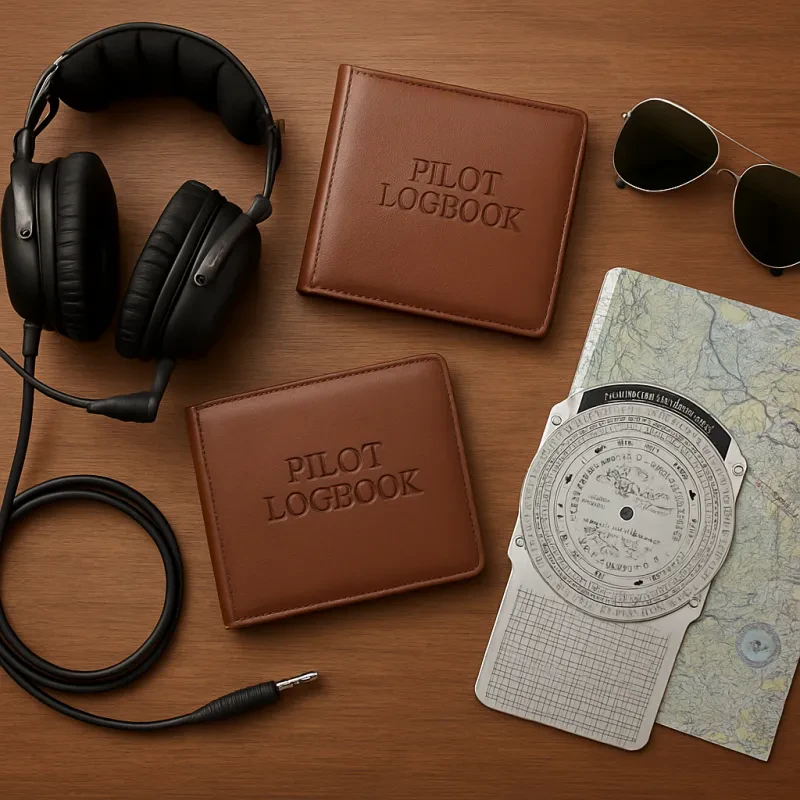Navigating the Skies: Choosing the Right Flight Training Books
When it comes to embarking on your journey to become a pilot, having the right resources at your fingertips is essential. Flight training books provide a wealth of knowledge and guidance to help you navigate the world of aviation. However, with numerous options available, choosing the right books can be a daunting task for beginners. This guide aims to simplify the process and help you select the most suitable flight training books for your needs.
The first aspect to consider when selecting flight training books is the level of detail you require. If you are a complete novice with no prior aviation knowledge, introductory books that provide a comprehensive overview of flying principles, aircraft systems, and basic navigation techniques are a good starting point. Look for titles that explain concepts in simple terms with clear illustrations to aid understanding. As you progress, you can delve into more advanced topics with books that cover instrument flying, weather patterns, air traffic control procedures, and other specialized subjects.
Another factor to consider is the author's expertise and reputation. Look for authors with a solid background in aviation, such as experienced pilots, certified flight instructors, or respected industry professionals. Their expertise ensures that the material is accurate, up-to-date, and aligned with industry standards. Additionally, seek recommendations from fellow pilots, flight instructors, or online aviation communities to find popular titles that have proven effective for others.
Lastly, be mindful of your learning style. Some individuals prefer books heavy on theory and technical explanations, while others favor practical examples and real-life anecdotes. Consider how you absorb information best and choose books that align with your learning preferences. Interactive elements like quizzes, case studies, or online resources that complement the text can also enhance your learning experience.
Mastering the Fundamentals: Must-Have Flight Training Books
As a beginner in the world of aviation, it’s essential to equip yourself with the right knowledge and resources to successfully navigate the complexities of flight training. Alongside practical lessons and hands-on experience, there are several valuable books that aspiring pilots should include in their training arsenal. These books cover a wide range of topics, from aerodynamics and navigation to aviation regulations and safety procedures, helping you develop a solid foundation in aviation theory and practice.
One must-have book for any aspiring pilot is "The Pilot's Handbook of Aeronautical Knowledge." This comprehensive guidebook, published by the Federal Aviation Administration (FAA), covers virtually every aspect of flying. From principles of flight and aircraft systems to meteorology and airspace regulations, this book serves as an excellent resource for both beginner and advanced pilots. It also includes important information on flight maneuvers, emergency procedures, and navigation techniques, making it an indispensable reference for all stages of flight training.
Another highly recommended book is "Stick and Rudder: An Explanation of the Art of Flying." Authored by Wolfgang Langewiesche, this classic book explores the art of flying and offers valuable insights into the principles of airplane control. By focusing on the relationship between the pilot, the aircraft, and the fundamental forces of flight, Langewiesche provides a unique perspective that enhances a pilot's understanding and intuition. With its clear explanations and real-world examples, "Stick and Rudder" is often considered a must-read for aspiring pilots.
In addition to these classics, "The Flight Training Manual" by William K. Kershner is an excellent companion for those beginning their flight training journey. This book covers a wide range of topics, including flight maneuvers, flight planning, communications, and emergency procedures. It offers detailed explanations and diagrams, making it easy for beginners to understand and apply the information. With its practical approach and emphasis on real-world scenarios, this manual is highly recommended for aspiring pilots pursuing their private pilot license.
Beyond Basics: Exploring Advanced Flight Training Literature
As a beginner in flight training, it is essential to have a strong foundation in the basics. However, once you have gained a solid understanding of the fundamental concepts, it is time to delve into more advanced materials to further enhance your knowledge and skill set. There are a plethora of books available that cater to aviators of all levels, and this section aims to introduce you to some of the best options for advanced flight training literature.
One highly recommended book is "The Advanced Pilot's Flight Manual" by William K. Kershner. This comprehensive guide covers a wide range of advanced topics such as navigation techniques, weather analysis, and advanced flight maneuvers. It also includes case studies, quizzes, and practical applications to further reinforce your learning. With its easy-to-understand explanations and practical approach, this book is a must-have for those who are ready to take their aviation skills to the next level.
Another valuable resource is "Instrument Flying Techniques and Procedures" by Michael C. Love. This book focuses specifically on instrument flying, which is a crucial skill for pilots who want to fly in adverse weather conditions or rely solely on instruments for navigation. It covers advanced instrument procedures, communications, and navigation techniques, providing in-depth knowledge that is vital for safe flying. With detailed illustrations and real-life scenarios, this book is an excellent companion for any pilot pursuing an instrument rating.
For those interested in aerobatic flying, "Basic Aerobatics" by David Robson stands out as a comprehensive guide. This book covers the theory, techniques, and practical aspects of aerobatics, including stalling, spinning, and advanced maneuvering. It also provides valuable insights into aircraft performance limitations and safety considerations. With its detailed explanations and practical tips, this book serves as an indispensable resource for pilots looking to explore the excitement and challenges of aerobatic flying.
As you progress in your flight training journey, remember to continually expand your knowledge base through these advanced flight training literature options. Through comprehensive guides like these, you can not only strengthen your aviation skills but also develop the confidence and proficiency necessary for more complex flying scenarios.
Learning from the Experts: Recommended Aviation Literature
When embarking on your journey to become a skilled aviator, it's crucial to supplement your flight training with comprehensive literature that can provide you with valuable insights and knowledge. Here, we recommend a selection of highly regarded aviation books that cover a range of topics, from the fundamentals of aviation to more specialized areas of interest.
1. "The Student Pilot's Flight Manual" by William K. Kershner
This widely acclaimed book serves as an excellent introductory guide for aspiring pilots. It covers the basics of flight training, including aircraft systems, aerodynamics, flight maneuvers, and navigation. With its clear explanations and detailed illustrations, Kershner's manual is a trusted resource for beginners seeking a solid foundation in aviation.
2. "Stick and Rudder: An Explanation of the Art of Flying" by Wolfgang Langewiesche
Regarded as a classic in aviation literature, "Stick and Rudder" delves into the art and science of flying. Langewiesche explores the essence of piloting, focusing on the fundamental skills needed to not only control the aircraft but understand the underlying principles of flight. This book is a must-read for those who want to truly grasp the mastery of aviation.
3. "The Turbine Pilot's Flight Manual" by Gregory N. Brown and Mark J. Holt
For those advancing into turbine-powered aircraft, Brown and Holt's manual is a valuable resource. It covers advanced topics such as high-speed aerodynamics, turbine engine operation, and complex systems, providing a comprehensive understanding of the unique challenges faced by turbine pilots. This book is highly recommended for aspiring commercial aviators.
4. "Weather Flying" by Robert N. Buck
As weather greatly impacts aviation, understanding meteorology is crucial for safe flight. "Weather Flying" by Robert N. Buck offers valuable insights into weather theory, instruments, and how to interpret weather reports. It provides practical advice on how to make informed decisions about flying conditions, making it an essential read for pilots of all levels.
5. "Instrument Flying Handbook" by Federal Aviation Administration (FAA)
This comprehensive guide is an indispensable resource for pilots aspiring to earn their instrument rating. Published by the FAA, the "Instrument Flying Handbook" covers everything from instrument flight rules to interpreting navigation aids. With well-structured explanations and diagrams, it equips pilots with the knowledge required to safely operate aircraft in instrument meteorological conditions.


